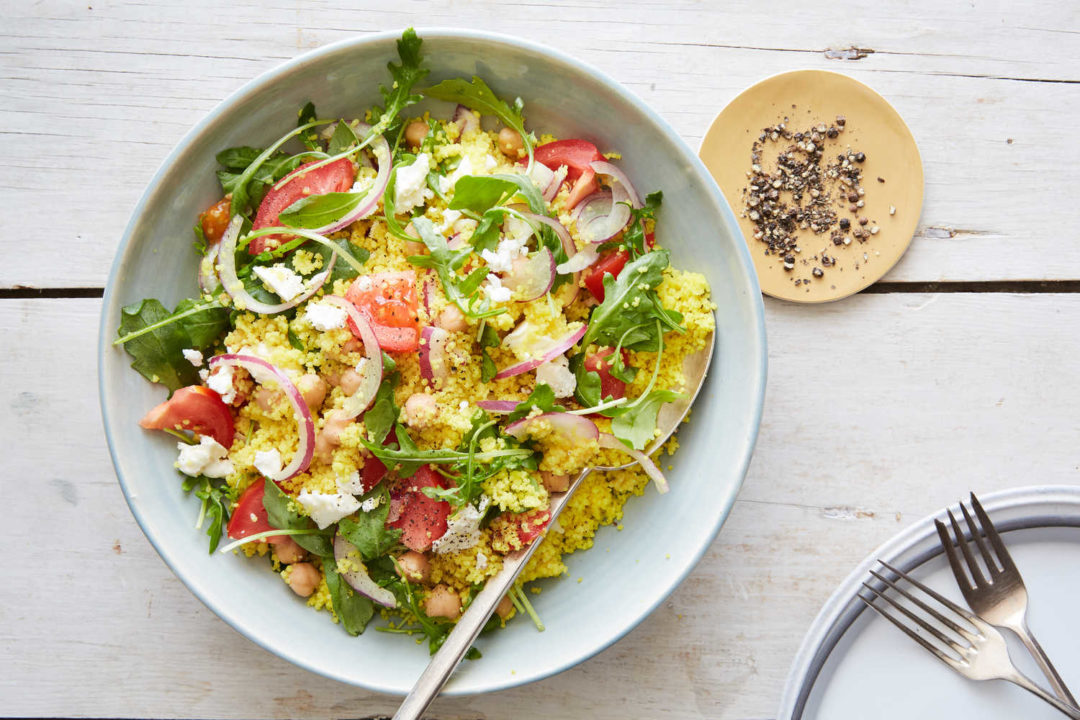
Couscous Salad With Turmeric, Chickpea and Tomato
Ingredients
- ¼ teaspoon ground turmeric
- ¼ cup plus 2 tablespoons extra-virgin olive oil, plus more to taste
- ½ teaspoon kosher salt, plus more for seasoning
- 1 ¾ cups couscous (10 ounces)
- ⅓ cup red-wine vinegar, plus more to taste
- Black pepper
- 3 medium ripe tomatoes, diced (2 1/2 cups)
- 1 (15-ounce) can chickpeas, rinsed and drained
- 1 small red onion, halved and very thinly sliced
- 5 ounces baby arugula
- 4 ounces feta cheese, crumbled (1/2 cup)
- Thinly sliced celery, or fresh or jarred chile peppers, for serving (optional)
- Nutritional Information
Nutritional analysis per serving (8 servings)
340 calories; 14 grams fat; 2 grams saturated fat; 0 grams trans fat; 8 grams monounsaturated fat; 1 gram polyunsaturated fat; 43 grams carbohydrates; 6 grams dietary fiber; 4 grams sugars; 10 grams protein; 8 milligrams cholesterol; 346 milligrams sodium
Note: The information shown is DiningAndCooking.com’s estimate based on available ingredients and preparation. It should not be considered a substitute for a professional nutritionist’s advice.Powered by DiningAndCooking.com
Preparation
- Combine the turmeric, 2 tablespoons oil and 1/2 teaspoon salt with 2 cups water in a large saucepan. Bring to a boil over high heat. Stir in the couscous, cover, and remove from the heat. Let stand for at least 5 minutes.
- Meanwhile, whisk the vinegar with the remaining 1/4 cup oil and a generous pinch each of salt and pepper in a very large bowl. Add the tomatoes and chickpeas and stir to coat.
- When the couscous is ready, scrape with a fork to fluff into bits. Pour into the tomato mixture, along with the onion, arugula and half the cheese. Fold gently until well mixed, then season to taste with salt and pepper, and dress with additional oil and vinegar, if desired.
- Divide among dishes and top with the remaining feta and the celery or chile, if using.
Tip
- It’s fastest and easiest to rinse grains in a sieve. Simply run cold water over them while gently shaking the sieve, then gently shake dry. It’s important to rinse grains to clean them and in the case of quinoa, to remove saponins, which can leave a bitter or soapy aftertaste. As it’s also tough to get flavors into grains once they’re cooked, it’s a good idea to season them with salt at this point.

Dining and Cooking